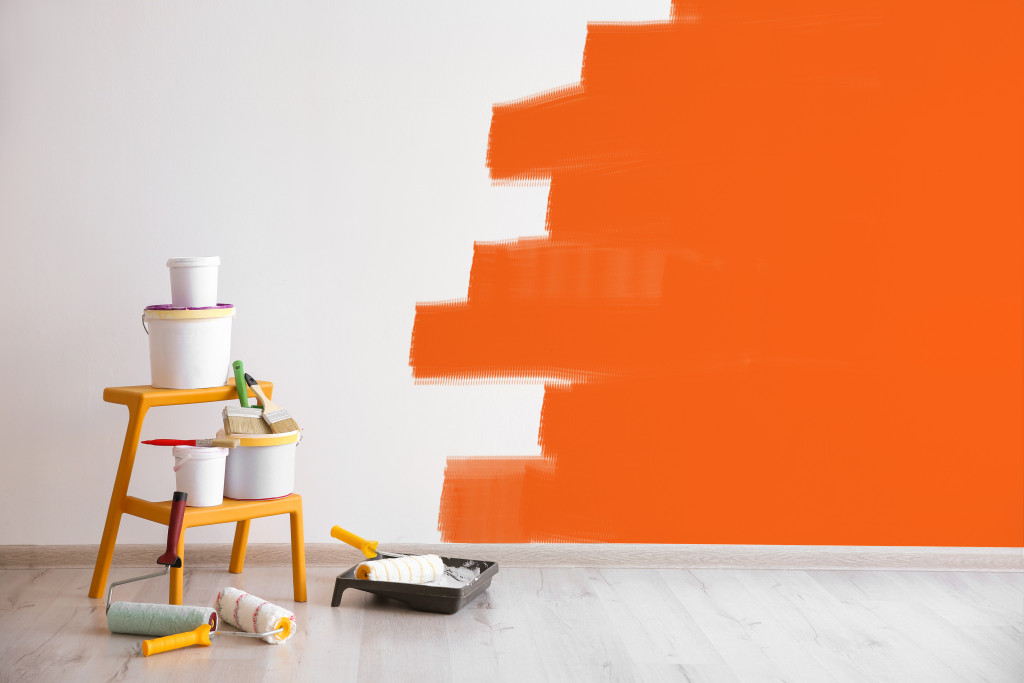With all the talk about the housing market these days, it’s no surprise that house flipping has become so popular. But what is house flipping? It’s when a real estate investor purchases a home, upgrades or renovates it, and then quickly sells it for a profit.
On TV, you might have watched house flipping shows such as “Flip or Flop,” “Property Brothers,” and “Flipping Virgins.” But in most cases, these high-profile flips involve expensive homes in desirable neighborhoods. This type of house flipping is known as “flipping above the median.”
But there’s also another form, “flipping below the median.” This involves buying low-priced homes that need lots of work. These are either in run-down neighborhoods or older, unattractive communities being revitalized. Because homes in these areas take less time and money to fix, a flipper can turn a more significant profit.
How do you get started in house flipping?
The first step is to buy a flip. Now when you hear the word “flip,” you might think of house flipping. But it can also refer to flipping a property as-is. This means buying and selling without making any repairs or renovations.
As with house flips, there are several ways to flip properties as-is. For example, you can buy a home from an estate sale. If there’s no estate sale, you can opt to purchase a foreclosure. You might even get lucky and find a great deal on a short sale.
These types of properties typically need some work, but not as much as a previously remodeled home. So if you don’t have any construction skills and equipment on hand, you’ll want to bring on a partner who does.
Another alternative is contract flipping. Under this arrangement, you find a home that needs work and then buy it directly from the owner under contract. Next, you turn around and sell your contract to another investor. Now, it’s time to go over the basics of house flipping: A for analysis, B for budgeting, and C for construction.
A for Analysis
The first step to house flipping is to decide whether it’s right for you. You need to assess your skills, experience, and available time before committing to a project. Plus, you need to figure out what type of home will earn the biggest profits.
For example, do you want to flip an upscale home in a wealthy New Jersey neighborhood or a middle-class house in Ohio? Do you want your flip to be for quick and easy profits or to be a long-term investment?
You’ll need some basic math and communication abilities in terms of skills. You’ll also need to make quick decisions and start a project with little or no supervision. Once you’ve completed a flip, you’ll need to be able to sell it.

B for Budgeting
Your budget is one essential aspect of house flipping. It will help you determine how much to pay for a home, what renovations are worth spending money on, and how much profit you’ll make. Here are some things to consider when budgeting:
- Market Conditions: When house flipping, it’s crucial to stay up-to-date on market conditions. This means knowing what homes are selling for in your area and how much renovations cost.
- Project Costs: How much will it cost to purchase the home you want to flip? What about the renovations and repairs? Do not forget the cost of appliances, fixtures, and new roofs.
- Option Costs: You might find an amazing deal on your flip, but it can come with extra costs that aren’t obvious. For example, you might find a house with a rock retaining wall that you want to keep. Or there might be a huge tree that you want to keep in front of the house. These things cost money.
- Profit: Finally, you need to determine how much profit you expect to make. You should factor in your costs plus 20% for any unexpected expenses.
C for Construction
Now that you have a clear idea of what your project will entail, you need to decide which renovations are worth making. This means doing a cost-benefit analysis to determine which projects will bring the highest returns. Here are some things to consider:
- You must complete renovations and repairs all at once while you own the property. Otherwise, it can be a nightmare to coordinate multiple contractors. If you hire a general contractor, make sure they are reputable and have experience with house flips. If you do all the renovations yourself, learn as much as you can about the different aspects of home construction.
- There are three types of renovations you can do to increase the value of your flips: cosmetic, functional, and structural. Cosmetic renovations add value, functional improvements add value, and serve a useful purpose. On the other hand, structural repairs are the most profitable because they address serious problems within the home.
House flipping can be a great way to make money, but it’s essential to do your research first. Once you’ve studied the market and your budget, you’ll be ready to start searching for that perfect house.

